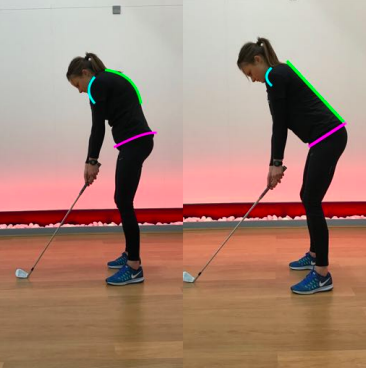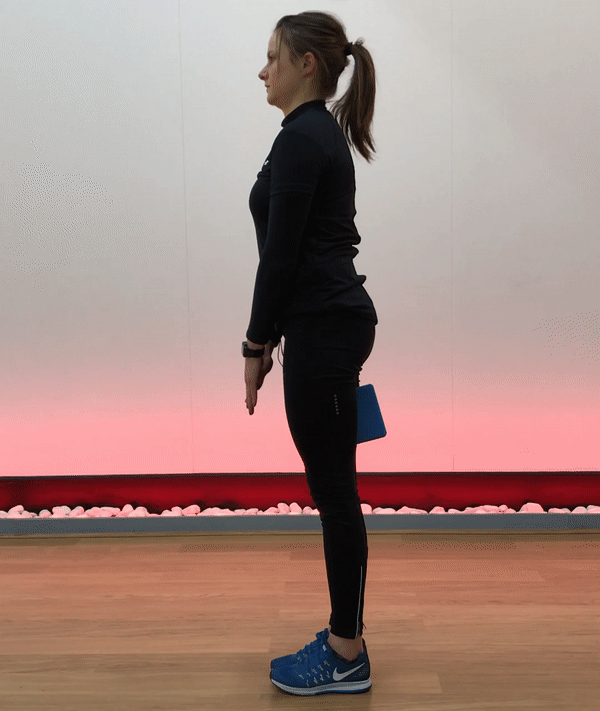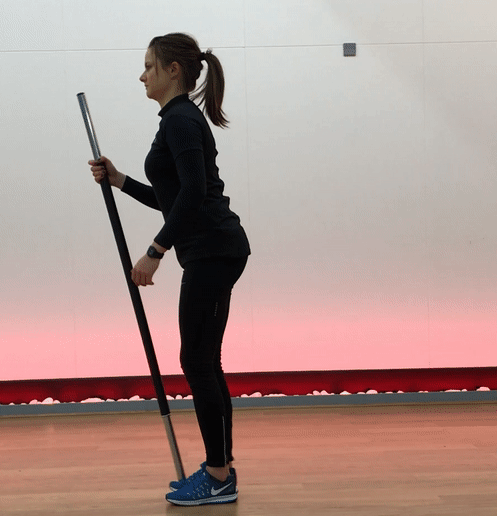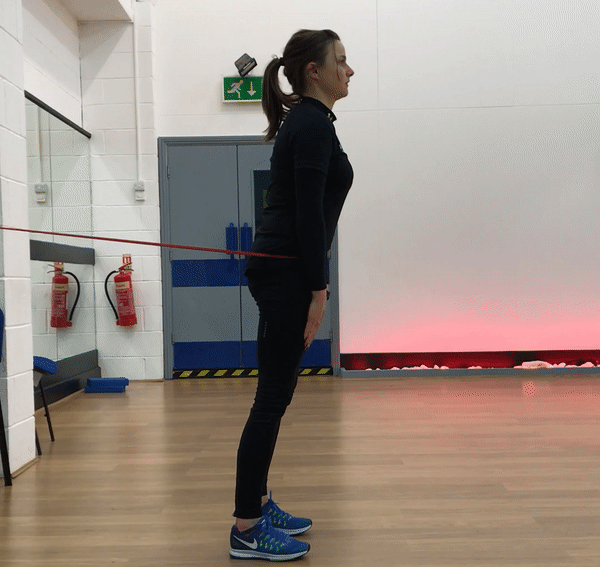IMPROVE MY GAME
Articles
How Improving Your Hip Hinge Can Increase Your Distance

Like most golfers you might be thinking what is a hip hinge and what relevance does it have to my golf swing?! Well the hip hinge is one of the most important movements as a golfer and as an athlete. As an exercise, the hip hinge involves a controlled flexion of the hips (or butt pushing backwards) followed by a powerful extension of the hips (butt thrusting forwards).
This position is often seen in a variety of gym exercises and most power developing movements such as deadlifts, olympic lifts and kettlebell swings. Not only is this position common in many gym based exercises, it’s also the basis of a strong, athletic set-up as a golfer.
The hinge movement done correctly is physically demanding. It involves the recruitment of nearly all the major muscles. It demands flexibility of the hamstrings and lower back alongside adequate strength of the glutes and core. If restrictions or limitations are found in any of the muscles playing a role in this movement then golfers can struggle with the hinge movement pattern itself. This may seem entirely irrelevant as a player however; if you like many golfers these days are training to become stronger then a poor hinge hugely reduces the benefit and transfer of the exercise you are doing. It also limits your choice of exercise as you become reliant on a small number of other movements to develop your strength. That’s a whole lot of strength gains you are missing out on!
HOW DOES A RESTRICTED HINGE EFFECT MY GOLF SWING?
1. Poor Set-Up Posture
Players with poor ability to hinge often stand taller at set-up. Restrictions through the lower back & hamstrings don’t allow for the hips to flex; then not allowing for a strong athletic posture at set-up. This often results in C posture to compensate (thoracic spine becomes flexed and shoulders rounded forwards). Being taller to the ball means the thoracic spine has to curve to reach the club to the ball. This weak set-up greatly reduces rotation in the backswing due to the thoracic spine being flexed and can impact the generation of club head speed via various technical errors.

2. Early Extension
Inability to hinge forces the player to change their spinal posture in the downswing. In players with a poor hinge, the glutes and core tend to be weak, causing loss of posture or the thrusting forwards of the hips in the downswing. This massively effects the quality and consistency of strike of the golf ball and therefore reduces distance. Couple this with the player having a lack of hinge at set-up then they are already in a weak position before the swing takes place. As the player comes into the downswing the lack of glute and hip position means they have no space for the club because the hips are already tucked under. As the club travels towards the ball the body must thrust forwards to aim to maintain balance. This changes the strike on the golf ball – typically shanks, thins or hitting out of the toe. All of which massively reduce the distance of the shot.
DIAGNOSING RESTRICTIONS WITHIN THE HINGE
For golfers with C or S posture or if they are struggling with an exercise containing a hinge movement pattern then we want to diagnose any potential physical limitations. These limitations will also be causing restrictions within the golf swing not just the exercise itself. This normally starts with looking at the players set-up posture. A lack of hip hinge in setup often transfers into the gym. To rule out any restrictions we would look at two particular TPI screens:
1. The Pelvic Tilt Test
Can the player arch and flatten their pelvis? Lack of pelvic control often comes from poor motor control or an S posture set-up. In this posture, the lumbar spine is arched, hip flexors become shortened and the hamstrings lengthened. In turn, this prevents the glutes from creating the strength and stability required to maintain correct spinal posture. If the player is in S posture then the hamstrings are already lengthened and therefore have nowhere to go. This makes the hinge movement very difficult to get to correct range and maximise its function.
2. The Toe Touch Test
Can the player touch their toes with a straight leg? A fail on this test often reveals poor hamstring and lower back flexibility. This generally means the player will struggle to get into the correct hinge position as the flexibility and range of muscle isn’t possible.
HOW TO IMPROVE YOUR HINGE
As an athlete, the inability to hinge correctly can impact your training. Many power generating exercises involve the ability to hinge correctly. If you are a golfer looking to get stronger in the gym then it is vital you learn how to hinge. Remember when we train in the gym we are not training the golf swing itself but the athletic qualities required to create a strong and powerful golf swing. Any exercises that develop power and speed often start with improving strength through a hinge pattern. Here’s how you can improve your hinge position:
1 DEVELOP HAMSTRING MOBILITY AND CORE ENGAGEMENT


2 DEVELOP THIS MOBILITY INTO A HINGE PATTERN

3 ADD RESISTANCE TO THE HINGE PATTERN

4 ADD WEIGHT

CONCLUSION
My clients have seen huge progress in their strength training by learning to hinge correctly. This can then be utilised effectively in exercises such as deadlifts and kettlebell swings. These exercises have massive crossover for generating more stability and producing greater club head speeds. As a result I’ve had players gain up to 7mph extra club head speed on driver from adding in hinge based exercises to their programs. That’s 10-15 yards further from the tee! If you want to get stronger and hit the ball further then have a go at some of the exercises above!

Natalie Lowe is a TPI Level 3 Certified, Accredited Strength & Conditioning Coach within the UK Strength & Conditioning Association. Owner of Pro-Fit Golf Conditioning based in Manchester, England. Working with golfers of all ages from amateur to professional.
Web - www.pro-fitgolfconditioning.com
Instagram - @pro_fitgolf
Facebook - https://www.facebook.com/profitgolfconditioning/
Twitter - @pro_fitgolf .